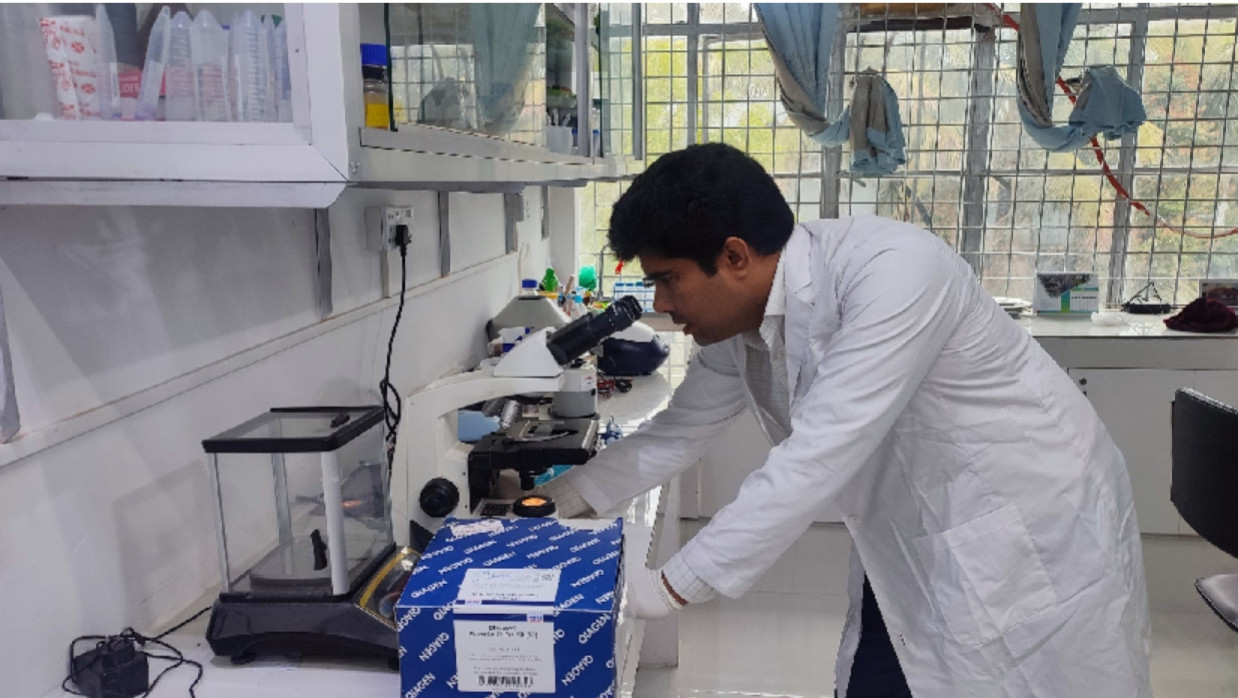
BAU Research Identifies Harmful Intestinal Parasites in Humans and Animals
- ২৮ জুন ২০২৫, ০১:২১

Unhygienic environments, inadequate sanitation, and the unrestricted movement of livestock and poultry have emerged as significant public health threats in densely populated urban settlements. This reality has been further confirmed by recent research conducted by a team of scientists from the Department of Parasitology at Bangladesh Agricultural University (BAU). Their study has detected the presence of harmful intestinal parasites affecting both animals and humans. Researchers believe these findings will play a vital role in developing effective disease prevention strategies for both human and animal health.
The research team was led by Professor Dr. Md. Sahiduzzaman of the Parasitology Department, with postgraduate student Beni Amin playing a key role in the study.
Discussing the methodology, Beni Amin explained that the study was carried out in a densely populated slum adjacent to the Railway Colony in Mymensingh city. A total of 102 samples were collected from various sources, including poultry (ducks, chickens), livestock (cows, goats), pigeons, children, and elderly residents, as well as water and soil. DNA extraction was performed in the laboratory, followed by pathogen identification using PCR and sequencing techniques.
Professor Sahiduzzaman detailed the key findings: three intestinal parasites known to cause diarrheal diseases in humans—Cryptosporidium, Blastocystis, and Giardia—were detected at both species and subtype levels. Genetic analysis revealed that some subtypes of these parasites can be transmitted bidirectionally between animals and humans.
Among the parasites identified, Blastocystis was the most prevalent, found in 24 samples. Its presence was relatively low in humans but notably high among goats, cows, and poultry. The detection of Blastocystis in 100% of goat samples was particularly striking. The study identified seven distinct subtypes of Blastocystis, with ST2 and ST3 exclusively found in humans, while ST23 and ST24 appeared only in animals and birds. Remarkably, identical subtypes were found in goats and chickens residing within the same household, indicating possible cross-transmission among these animals.
The professor emphasized that the presence of identical Blastocystis subtypes in various animal species strongly supports the possibility of parasite transmission between them.
Regarding Cryptosporidium, the parasite was detected in eight samples, including one human specimen. This human sample carried a specific subtype of Cryptosporidium parvum, commonly transmitted to humans through animals. The parasite was also found in three goats and three chickens. Additionally, Cryptosporidium meleagridis, a bird-associated parasite, was detected in one soil sample.
In contrast, Giardia intestinalis was identified only in a single soil sample, likely originating from the feces of local humans or animals, according to Professor Sahiduzzaman.
When asked about the underlying causes of infection, the professor pointed to unplanned sanitation systems, free roaming of animals, and accumulation of waste in slum areas, all of which create a conducive environment for parasite transmission. Contaminated water and soil thus pose significant health risks to both humans and animals.
The study further revealed that abandoned waste sites serve as infection hotspots for livestock such as cows and goats, increasing the risk of zoonotic transmission to humans. Parasite-laden feces from infected animals and humans can infect others, while contaminated wastewater and soil can spread parasites to nearby ponds, ditches, or drainage channels. Activities like bathing, washing clothes, and cleaning utensils in such water bodies may expose humans to infections.
On the topic of public awareness and control measures, Professor Sahiduzzaman stressed the urgency of raising awareness and implementing necessary interventions in crowded and unhygienic settlements. Proper management of animal waste, well-designed sanitation infrastructure, and creating healthier living environments are critical to reducing parasitic infections.
Regarding the study’s limitations and future prospects, the professor noted that this was a pilot project, representing a preliminary investigation on a limited scale. However, the data generated provides a valuable foundation for larger and more comprehensive studies. Expanding such research to other slum areas, rural communities, and densely populated urban neighborhoods across Bangladesh would offer a clearer picture of parasitic infections nationwide. With adequate support from governmental and non-governmental organizations, the research team hopes to advance into more extensive and in-depth studies.
To effectively prevent parasitic infections, securing safe water supplies, managing livestock properly, ensuring effective waste disposal, and increasing public awareness at all levels are essential, the professor concluded. This research marks a significant step in Bangladesh’s public health efforts, highlighting the importance of adopting a ‘One Health’ approach that considers humans, animals, and the environment as an interconnected whole.